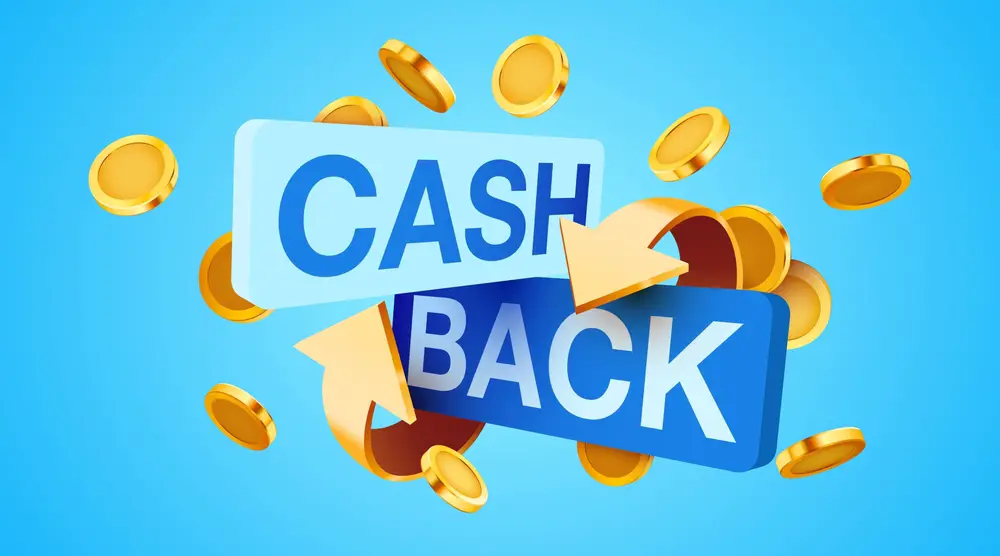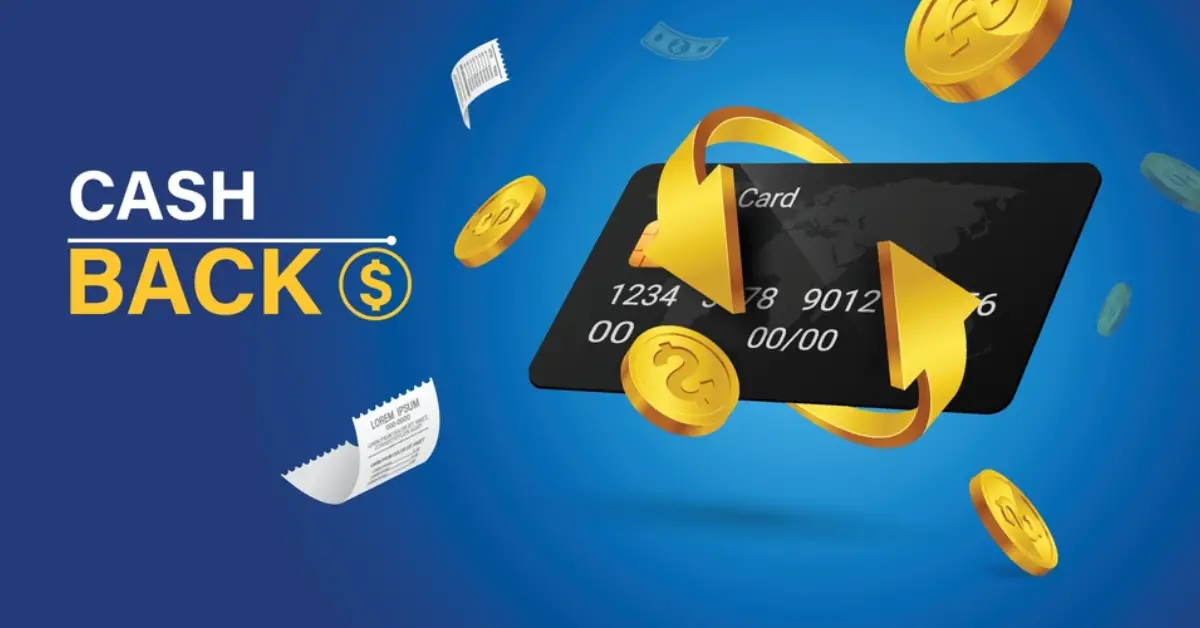Best Credit Cards for Rewards and Cashback in the US ! When it comes to choosing a credit card, the options can seem overwhelming. But if you’re smart about it, your credit card can be much more than just a tool for making purchases—it can actually pay you back! Whether you’re looking to earn rewards for travel, get cash back on your everyday purchases, or both, there’s a card out there that’s perfect for you.
In this guide, we’ll dive into the best credit cards for rewards and cashback in the US, covering everything you need to know to make an informed decision.
Introduction to Rewards and Cashback Credit Cards
Before diving into the specifics of the best cards out there, it’s essential to understand what rewards and cashback credit cards are all about. These types of credit cards are designed to give you something back every time you spend money using the card. Depending on the card, you can earn points, miles, or straight-up cash back on your purchases.
But how do you know which type of rewards card is right for you? And with so many choices, how do you pick the best one? Don’t worry—we’re here to break it all down for you.
Types of Credit Card Rewards
Credit card rewards generally fall into two main categories: points-based rewards and cash back. Both have their pros and cons, and the right choice for you will depend on your spending habits and what you value most.
Points-Based Rewards
Points-based rewards are a popular choice, especially if you like flexibility. With these cards, you earn points for every dollar you spend. Later, you can redeem these points for a variety of things like travel, merchandise, or gift cards.
Travel Rewards
If you’re a frequent flyer or a road warrior, a credit card with travel rewards could be a perfect fit. Travel rewards cards typically allow you to earn points that can be redeemed for flights, hotel stays, car rentals, and more. For example, the Chase Sapphire Preferred® card is a top pick in this category. It offers 2x points on travel and dining, and those points are worth 25% more when redeemed for travel through the Chase Ultimate Rewards® portal.
Travel rewards cards often come with additional perks like no foreign transaction fees, access to airport lounges, and even travel insurance. These benefits can make your travel experiences more comfortable and secure, so if you’re on the go often, these cards are worth considering.
Merchandise and Gift Cards
Some points-based rewards programs allow you to redeem points for merchandise or gift cards. This can be a good option if you prefer getting tangible items over experiences. However, it’s worth noting that the value of points might not be as high when redeemed for merchandise compared to travel.
For instance, 10,000 points might get you a $100 gift card, but if used for travel, those same points could be worth $125 or more. If you don’t travel much, though, this could be a great way to get value from your points without leaving home.
Cash Back Rewards
Cashback rewards are straightforward—spend money, get money back. But not all cashback cards are the same. They come in several flavors, including flat-rate cashback, tiered cashback, and rotating categories.

Flat-Rate Cashback
Flat-rate cashback cards offer the same percentage back on every purchase you make. This is a simple and hassle-free option, especially if you don’t want to keep track of different categories or changing rewards rates. A prime example is the Citi® Double Cash Card, which gives you 1% cashback when you buy something and another 1% when you pay it off. That’s a solid 2% cashback on everything you buy, which can add up quickly if you use your card regularly.
Tiered Cashback
Tiered cashback cards offer different cashback percentages depending on where you spend your money. For example, the Blue Cash Preferred® Card from American Express gives 6% back at US supermarkets (up to $6,000 per year, then 1%), 3% at US gas stations, and 1% on other purchases. If you spend a lot on groceries or gas, a tiered cashback card like this could be a great choice.
However, it’s essential to understand your spending habits before opting for a tiered card. If you don’t spend much in the higher-earning categories, you might be better off with a flat-rate card.
Rotating Categories
Then there are cards like the Discover it® Cash Back, which offer 5% cashback on purchases in rotating categories that change every quarter. These categories can include anything from groceries to dining out to gas stations. While this can be an excellent way to earn a lot of cashback in specific areas, it does require you to keep track of the categories and activate them each quarter. For some people, the extra effort is worth it, especially since Discover will match all the cashback you’ve earned at the end of your first year.
How to Choose the Right Credit Card
Choosing the right credit card isn’t just about picking the one with the highest rewards rate. You’ll want to consider a variety of factors to make sure the card you choose fits your lifestyle and spending habits.
Analyze Your Spending Habits
The first step is to take a close look at how you spend your money. Do you spend a lot on groceries? Travel frequently? Or maybe most of your money goes toward dining out? Knowing where your money goes will help you pick a card that maximizes your rewards.
For example, if you spend a significant amount on dining and travel, a card like the American Express® Gold Card might be perfect for you. It offers 4x points at restaurants, 4x points at US supermarkets (on up to $25,000 per year in purchases, then 1x), and 3x points on flights booked directly with airlines.
Consider the Annual Fee
Many of the best rewards credit cards come with an annual fee. While these fees can be worth it if you’re earning a lot of rewards, it’s essential to make sure the rewards you earn will more than cover the cost of the fee. For example, if a card has a $95 annual fee but you’re earning $300 worth of rewards each year, the card is still a good deal.
Also Read – How to Get a Personal Loan with Bad Credit in the US
However, if you don’t spend enough to justify the fee, a no-fee card might be a better option. No-fee cards typically offer lower rewards rates, but if you’re not a big spender, this could still be the best choice for you.
Look at the Sign-Up Bonus
Many credit cards offer a sign-up bonus, which is a one-time reward you can earn by spending a certain amount within the first few months of opening the account. These bonuses can be very lucrative—sometimes worth hundreds of dollars in cash back or travel rewards.
For example, the Chase Sapphire Preferred® card offers a hefty sign-up bonus after you spend a certain amount within the first three months. But be careful: if you’re not sure you can meet the spending requirement without going over your budget, it might be better to choose a card with a smaller bonus or no bonus at all.
Check for Additional Perks
Beyond rewards and cashback, many credit cards come with additional perks that can add significant value. These can include things like extended warranties, purchase protection, travel insurance, and even access to exclusive events.
For instance, some cards offer free access to airport lounges, which can make your travel experience much more comfortable. Others might offer concierge services, which can help with everything from booking tickets to making dinner reservations. Weigh these benefits when making your decision—sometimes the extra perks can tip the scales in favor of one card over another.
Top Credit Cards for Rewards
Now that you have a better understanding of how to choose a credit card, let’s take a look at some of the top credit cards for rewards in the US.
Chase Sapphire Preferred®
The Chase Sapphire Preferred® is one of the most popular travel rewards cards on the market, and for good reason. It offers 2x points on travel and dining and 1x points on all other purchases. One of the biggest selling points is that your points are worth 25% more when you redeem them for travel through the Chase Ultimate Rewards® portal.
This card also comes with a generous sign-up bonus and valuable travel protections, such as trip cancellation insurance and primary rental car insurance. If you’re a frequent traveler, the Chase Sapphire Preferred® should definitely be on your shortlist.
American Express® Gold Card
If dining out and grocery shopping are where you spend most of your money, the American Express® Gold Card might be the best choice for you. It offers 4x points at restaurants, 4x points at US supermarkets (up to $25,000 per year, then 1x), and 3x points on flights booked directly with airlines.
The card does come with a higher annual fee, but the rewards can quickly add up if you spend a lot in these categories. Plus, you’ll get a host of other benefits, including dining credits and access to the American Express Global Assist Hotline.
Capital One Venture Rewards Credit Card
The Capital One Venture Rewards Credit Card is an excellent option for those who prefer simplicity. It offers 2x miles on every purchase, with no categories to track or quarterly activations to worry about. You can redeem miles for travel purchases or transfer them to various travel loyalty programs for even more value.

Top Credit Cards for Cashback
If you’re someone who prefers to see money coming back into your account rather than earning points or miles, a cashback credit card might be the way to go. Let’s take a closer look at some of the top options available in the US.
Citi® Double Cash Card
The Citi® Double Cash Card is one of the simplest and most effective cashback cards out there. It offers a straightforward 2% cashback on all purchases—1% when you make a purchase and another 1% when you pay it off. There’s no annual fee, and you don’t have to worry about categories or rotating rewards. This card is perfect for someone who values simplicity and consistency in earning cashback.
The Citi® Double Cash Card also offers other perks like no caps on how much cashback you can earn and the ability to convert your cashback into Citi ThankYou® Points, giving you more flexibility in how you use your rewards.
Discover it® Cash Back
The Discover it® Cash Back card is a standout for those who don’t mind keeping track of rotating categories. Every quarter, you can earn 5% cashback on up to $1,500 in purchases in categories that change throughout the year—think groceries, gas stations, and restaurants. All other purchases earn 1% cashback.
One of the unique features of the Discover it® Cash Back card is that Discover will match all the cashback you’ve earned at the end of your first year. This essentially doubles your rewards for the first 12 months, making it a particularly attractive option for new cardholders. Plus, there’s no annual fee, so all the cashback you earn is yours to keep.
Blue Cash Preferred® Card from American Express
For those who spend heavily on groceries and gas, the Blue Cash Preferred® Card from American Express is a top choice. It offers a generous 6% cashback at US supermarkets (up to $6,000 per year, then 1%), 3% at US gas stations and on transit, and 1% on other purchases. This card is ideal for families or individuals who spend a significant portion of their budget on everyday essentials.
While the Blue Cash Preferred® Card does come with an annual fee, the high cashback rates in key spending categories can easily offset this cost. Additionally, American Express offers a variety of benefits, including purchase protection, extended warranties, and access to exclusive events.
Credit Card Best Practices
Having a rewards or cashback card is just the beginning. To truly benefit from these cards, you need to use them wisely. Here are some best practices to ensure you’re getting the most out of your credit card.
Pay Your Balance in Full
One of the golden rules of using credit cards is to always pay your balance in full each month. Carrying a balance from month to month means you’ll be charged interest, which can quickly wipe out any rewards or cashback you’ve earned. By paying your balance in full, you not only avoid interest charges but also maintain a healthy credit score, which can help you qualify for even better credit cards in the future.
Maximize Your Rewards
To maximize your rewards, use your credit card for all your everyday purchases, but only if you’re disciplined enough to pay off the balance each month. Whether it’s groceries, gas, dining out, or travel, make sure you’re using the right card for each category to earn the most rewards possible. Some people even carry multiple rewards cards to ensure they’re always getting the highest rate of return on their spending.
Keep an Eye on Fees
While rewards and cashback are great, fees can quickly eat into the value of those benefits. Be mindful of any fees associated with your credit card, including annual fees, foreign transaction fees, balance transfer fees, and late payment fees. If a card’s fees start to outweigh its benefits, it might be time to reconsider whether it’s the best card for you.
Also Read – Tips for Paying Off Your Mortgage Faster in the US
Redeem Rewards Strategically
When it comes time to redeem your rewards, think strategically. Some redemption options offer better value than others. For example, points or miles are often worth more when redeemed for travel compared to merchandise or gift cards. Similarly, cashback can be more valuable when applied as a statement credit versus a direct deposit into your bank account, depending on the card’s terms. Take the time to understand your redemption options and choose the one that offers the best value for your rewards.
Monitor Your Credit Score
Your credit score plays a significant role in your ability to qualify for the best credit cards. Make sure you’re regularly monitoring your credit score and taking steps to maintain or improve it. This includes paying your bills on time, keeping your credit card balances low, and avoiding applying for too much new credit in a short period. A strong credit score will help you qualify for cards with higher rewards rates and better perks.
Conclusion
Choosing the right credit card for rewards and cashback in the US comes down to understanding your spending habits and knowing what you want out of your credit card. Whether you’re looking for the flexibility of points-based rewards, the simplicity of flat-rate cashback, or the high earning potential of tiered or rotating categories, there’s a card out there that’s perfect for you.
The key is to use your credit card wisely—pay off your balance in full each month, maximize your rewards by using the right card for the right purchases, and be mindful of any fees. By following these best practices, you can turn your everyday spending into valuable rewards and cashback that can make a real difference in your financial life.
Remember, the best credit card for someone else might not be the best one for you. Take the time to compare your options, consider what benefits are most important to you, and choose the card that aligns with your financial goals.
FAQs
1. What credit score do I need to get a rewards credit card?
Most rewards credit cards require good to excellent credit, typically a credit score of 670 or higher. However, some cards are available to those with fair credit, though they may offer lower rewards rates or come with higher fees.
2. Can I have more than one rewards credit card?
Yes, many people carry multiple rewards credit cards to maximize their earning potential. Just be sure to manage them responsibly and avoid carrying balances, as interest charges can negate the value of your rewards.
3. How can I avoid paying interest on my credit card?
The best way to avoid paying interest is to pay your balance in full each month by the due date. This way, you won’t be charged interest on your purchases, and you’ll still earn rewards.
4. Are cashback rewards considered taxable income?
In most cases, cashback rewards are not considered taxable income because they’re viewed as a rebate on purchases. However, sign-up bonuses that don’t require you to make a purchase (such as a cash bonus for opening an account) may be taxable.
5. What happens if I miss a payment on my rewards credit card?
Missing a payment can result in late fees, a higher interest rate, and potentially losing your rewards. It can also negatively impact your credit score. It’s essential to make at least the minimum payment by the due date to avoid these consequences.


2 thoughts on “Best Credit Cards for Rewards and Cashback in the US”